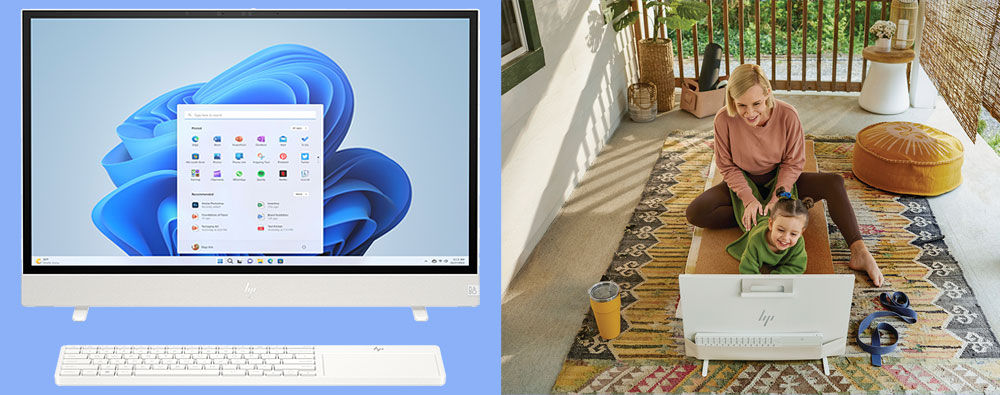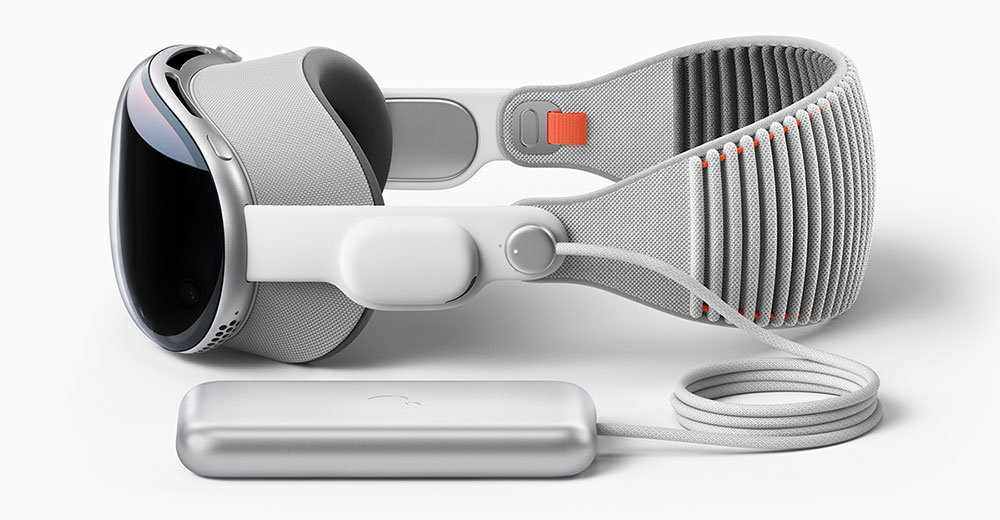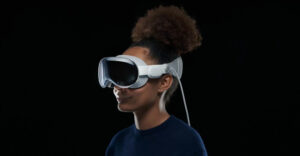The Apple Vision Pro has started to ship, and reviewers are providing a range of opinions on this first-generation product. Like most first-gen hardware, the offering is strong on technology but still weak on applications, but both will change as it evolves and more developers start building for it.
As of this writing, Apple has pre-orders for around 200,000, which should be enough to get developers interested in the platform. Now we’ll see if Apple’s weakened marketing, which is still stronger than most of its peers, is up to the task of building demand for this device outside Apple loyalists.
For most of you, this device isn’t ready yet. It’s too expensive, has little app support, and using the rule of three, the current version has two more iterations to go before it hits the price and functionality that most will find compelling.
Let’s talk about Apple Vision Pro this week, and we’ll close with my Product of the Week, the HP Envy Move, an all-in-one portable PC that I have found surprisingly compelling over the last few months.
Generation One Products
There are two kinds of Generation One products: those that are first generation for a vendor but exist in an existing robust ecosystem, and the other where the product is supposed to launch the ecosystem it will eventually use. The first product class tends to be far safer because you immediately have something to do with it, and the vendor bringing out the product can learn from those who went first.
The Apple Vision Pro is the latter class of Generation One. While there are VR apps and VR services in the market, Vision Pro doesn’t make use of them, and Apple and its partners are expected to develop the product’s ecosystem.
Generation One products of this type sell best to those experienced with this class of offering and willing to wait for or help develop apps for it. These are typically technically adept folks who can work around initial limitations and want to participate in the market creation process that will eventually surround the product. They have a high tolerance for breakage and can easily afford the $3,500 this device costs.
I expect a significant percentage of the initial 200,000 folks who bought this headset aren’t the right folks and will struggle with their experience. However, those used to or ready to experience the unique pain associated with a Generation One product will find this offering eventually compelling and fun.
Focus on Functionality
When buying a tech product, a fundamental rule is to focus not on the product itself but on its capabilities and what it enables you to do.
Game systems are bought to play certain named games (Halo for the Xbox, for instance), and PCs are bought to run Microsoft Office. You typically don’t buy hardware in the class without an idea of what you are going to run on it.
Yet, many buyers of the Vision Pro don’t yet know which apps they’ll use on it and aren’t specifically seeking out named apps for the device. Consequently, many Vision Pro units will likely sit unused on shelves until a compelling app emerges.
It’s better to wait for the third generation in a class like this and skip the first two, as users of those generations will have experienced the pain of the device’s birth in terms of usability and dedicated applications.
Finally, a Generation One product has a certain unique exclusivity because it conveys a certain status. However, the related visibility could open the user up to device theft as the Vision Pro is known to be expensive and portable, making it a potential theft risk. So don’t leave this thing in a car in view through the windows, or it will likely grow legs and walk out of your life.
The Good and the Bad
The Apple Vision Pro impresses with its amazing 4K displays, lightweight build, and sleek design, making it a standout in the VR segment. However, it falls short in actual VR capabilities, offers few compelling apps, and comes with a hefty price tag due to its limitations.
On the $3,500 price, it’s better to bring out an expensive, no-compromise device first and then work to attract a bigger audience as you drive down the cost and price of the device, and, to Apple’s credit, this is what it’s doing.
This way, you develop envy, the initial reviews are more positive (and most Vision Pro reviews have been positive), and you set a foundation for when the device matures and goes mainstream. I’ve found that the Rokid Max AR Glasses and Goovis G3 Max do most of what the Vision Pro currently does for far less money and provide a lower-risk initial entry point into spatial computing.
I use the Rokid when I travel on planes and have found it to be a far better value at around $500 than the vastly more expensive Vision Pro.
A Test of Apple’s Marketing
The success of Vision Pro hinges on the effectiveness of Apple’s marketing strategy. Not only do these efforts need to attract more customers to Vision Pro, but they must also engage with current buyers to secure and highlight positive outcomes. Failing to achieve this could result in negative social media feedback, which will kill demand.
So, this will be a test of Apple’s marketing arm to see if Apple still builds a decent demand-generation campaign around the product. Apple traditionally funds marketing better than most, and if it adequately funds marketing the Vision Pro, it could eclipse even the iPhone as a disruptive offering as it evolves version over version.
Wrapping Up: The Case for Patience with New Tech
I like buying version one products because I’m willing to put up with the pain of having something unique, and I’m often asked to comment on products like this, so they fit within my job specification.
However, if you aren’t one of the folks who loves doing version one offerings, I’d recommend waiting until version three. By then, the bugs should mostly be out of the product, app support will be far better, and a critical mass of people can help you on social media if you run into problems.
Credit to Apple for building an incredible product. However, waiting until it is more refined and better supported would be the best path forward for most of you.

The HP Envy Move All-in-One PC
The Apple Vision Pro’s price of $3,500 makes the HP Envy Move All-in-One PC at under $800 look like a bit of a bargain.
I’ve been using the HP Envy Move for a few weeks and found it a terrific way to work around the house. It’s more convenient than the 18-inch Alienware laptop I use for this purpose because the Move has a 24-inch screen, so it’s much more like using a desktop computer than a laptop, even though the Move is as portable, at least around the home, as a laptop.
The HP Envy Move only has a 300-nit display, which means it doesn’t work well outside in direct sunlight. But if you need to be able to work where your kids or pets are playing indoors, this is the PC for you.

The HP Envy Move All-in-One 24-inch PC (Images Credit: HP)
One unique feature of this Intel-based all-in-one is that it deploys its base automatically when placed on a table. Another interesting feature is that it has a way to carry the combination keyboard trackpad more easily with a pouch on the back; that way, you can hold the PC, keyboard, and trackpad with one hand.
While you can play casual games or watch movies on the PC, which makes for a nice portable TV alternative, it is by no means a gaming or performance device. While the base configuration has an Intel i3, I’d suggest paying the extra $150 for an i5 and 16 GB of memory to improve overall performance.
It is interesting to note that the Envy Move’s battery life is around four hours, which is two more hours than the Vision Pro, making it more useful for watching movies in terms of power and interruptions.
Because the HP Envy Move All-in-One is a first-generation product that enters an existing ecosystem and is initially extremely useful, it provides a counterpoint to the Apple Vision Pro, which will have to create an ecosystem.
The 24-inch HP Envy Move All-in-One PC ships on Feb. 23 and is my Product of the Week.























































